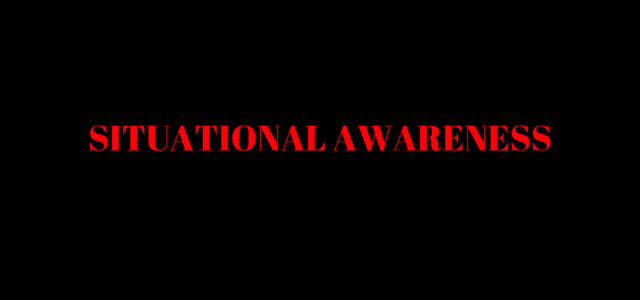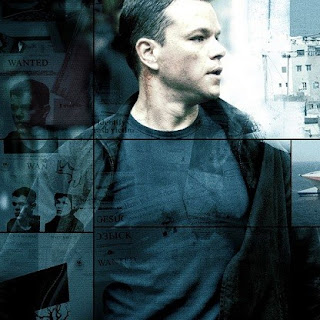
There is a scene at the beginning of the movie “The Bourne Identity ” where Jason Bourne sits at a restaurant table, wondering who he is and why he has a handful of passports as well as a weapon in a Safe deposit box.
He also realizes that he is able to notice things that most people would never have perceived.
This almost superhuman ability to observe its environment and draw detailed assessments is called ” Awareness of the situation” . It is not exclusive to prerogative of high-level spies, and you can also learn to develop it …
As the name implies, situational awareness is just knowing what is going on around you. This seems simple at first sight, but in fact requires a certain practice. Just as it is taught to professional soldiers, certain police officers, and of course government assassins such as Jason, it is also an important skill for us survivalists. In a situation where the danger is present, the ability to recognize a peril just a few seconds before everyone else can keep you and your family safe.
But it is also a skill that can and should be developed for good reasons other than personal defense or security. Awareness of the situation is just another name for “mindfulness”, and increasing yours will not only make you more aware of what is going on around you, but also more present in the whole Your daily activities. This in turn will help you make better decisions in all aspects of your life.
The following considerations are conclusions of experts in the field of tactics, and will give you the best ways to acquire it. While the emphasis will be on developing situational awareness to prevent or survive a violent attack, the same principles will help you to increase your observation abilities in all areas of life,
How To Develop Your Situation Awareness
Much of the information that can be found about Situational Awareness generally claims that it can be developed by “keeping an eye on its environment”, by “watching your back”, or by “staying with your back on the wall” .
All these definitions are not false. In fact, that’s exactly what it’s all about: knowing what’s going on around by scanning the environment like a scanner. However, such definitions are not entirely complete. For example, they omit to say what you have to look for exactly; How can you know that you are paying attention to the right things? Are there any warning signs or behaviors, An imminent peril that I should know?
We will therefore begin by discussing the general principles concerning the development of observational abilities, and we will then plunge more fully into Situational Awareness on its own to answer the important questions that precede it.
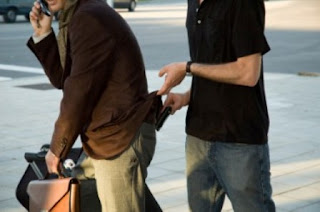
Observer + Orienter = Awareness of the situation
A good way to fully understand the concept of Situational Awareness is to
confront it with the ” OODA Loop “; An abbreviation that we have already presented in another article and which means: Observe – Orient – Decide – Act . The OODA loop is a decision-making learning system set up by an American fighter pilot. In a face-to-face confrontation, such as an aerial combat, a violent altercation in an underground car park, or even a political debate, the person who is able to solve the loop first is the one who will win the game.
Of course, the phase of the Observation is that which most people assimilate to the Awareness of the situation. However, The second stage of the loop, that of the Orientation , is also an integral part of it. And it is the latter which will enable us to answer the preceding questions, namely what the Awareness of the situation implies exactly. The Orientation will tell us what we need to look for when we look at it, and then put it back into context so we know what to do with that information. In other words:
Observe + Orienter = Awareness of the situation
But how can we become better observers in order to improve our situational awareness and how should we orient ourselves in order to observe the right things and understand the context in which we find ourselves What do we see? That of the Orientation , is also an integral part of it. And it is the latter which will enable us to answer the preceding questions, namely what the Awareness of the situation implies exactly. The Orientation will tell us what we need to look for when we look at it, and then put it in context so that we know what to do with that information. In other words: Observer + Orienter = Awareness of the situation
Observe: Staying in Yellow condition
Jeff Cooper, an American expert in personal defense, has established a color coding system to help combatants assess their state of mind in combat scenarios. Each color represents a potential state of consciousness and concentration:

For optimal Situational Consciousness , Cooper recommends that you always stay in Yellow condition . This can be described as ” A state of alert relaxed “. There is no specific danger, but we keep our heads in the air and we perceive our environment with all our senses.
Most people assimilate the Awareness of the situation with only visual stimulation, but the fact is that one can learn a lot from a particular scenario with the sounds (or their absence), even even the odors.
Even if the senses are awake in Yellow condition , it is important to stay relaxed. By adopting a calm attitude, one avoids paying unnecessary attention on ourselves. If one looks impatient and one agitates frantically the head on one side and the other, the people around will notice it. Moreover, the fact of remaining relaxed allows to keep its concentration open, which in turn allows to gather more information about what happens in the surroundings. Research shows that when one is nervous or stressed, our attention shrinks, making one concentrate on fewer things at once. A limited concentration can therefore ignore important details of our environment.
So take your eyes off your smartphone, do not place yourself “out of zone”; Open your eyes, ears, nose, and scan the surroundings to see what happens!
1. Place yourself in an optimal situation.
In order to achieve an effective Situational Awareness, you must be able to observe as much as possible of what constitutes your environment. Positioning yourself in a blind spot will slow down the flow of incoming information. For example, something might be in the middle that keeps you from seeing the guy who just entered your restaurant … Also, you do not have eyes behind your head, so you can not see what Happens behind you.
So whatever the environment you’re in, get into a position where you can see the maximum you can see . Whether in the restaurant, in an evening you are invited to, in an underground car park, etc. C ‘ Is a habit you should take right now, and for the rest of your life.
Without going as far as paranoia, you should always be in a position where you can see all the exits and allow you to stick your back to the wall if needed. Such a position allows for quick evacuation, while eliminating the possibility of not seeing a danger materialize behind.
Of course, this is not always possible. You do not necessarily have control on a Saturday night on the choice of the table that the boy just placed you, and you would probably reap bad looks if you stayed stuck in a corner while the others stand in line. What we can always do by cons, it is best that It is possible given the situation. In this restaurant you may not be able to choose the table you want to sit on, but you can choose which seat you prefer, namely the one that gives you the best view of the interior of the hotel. If you have to wait in line, do it, and often look around naturally, noting what is there.
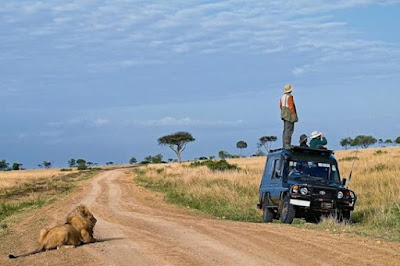
2. Play the game
You can also train your observation skills by playing a small game. For example, when entering an institution, take note of the different things that make up the environment: how many people are behind the counter, The type of the person seated near you, the number of entries and exits, etc. If you are more than one person, one of the people accompanying you could then ask you a few questions, in the following style: How many employees were present behind the counter? Was the person at your side a man or a woman? What was his dress? How many outings were there? Etc.
It’s quite fun to play, but most of all, it draws a lot to be more attentive to its environment. If you have children,
3. Master the memorization
In the same vein, the ideal would be to control memory. To return to the film, Bourne knew all the numbers of the plates of the vehicles parked in front of his restaurant. One can practice this ability by practicing with a deck of cards, or a sequence of random numbers. This process is called Mnemotechnique ; There are complete methods for this, which allow to retain incredible sequences to make you pass for a true beast of fair. For having studied them in the past, I can tell you that it is much easier than it seems.
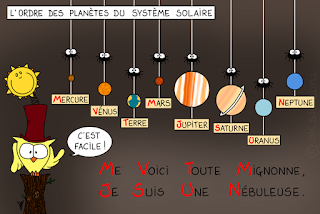
Orientation: the basics, goals, and action plans
Better observation is not sufficient to control the Awareness of the situation. You also need to know what to look for, and then put the information back into context so that it becomes meaningful and becomes executable. This is where the Orientation comes into play.
The Orientation phase provides three things that will help us to finalize the Awareness of the situation: 1) Pathways and anomalies for a given environment, 2) The mental models of human behavior we seek, and 3) Action plans that result from our observations.
1. Establish a course of action wherever you go
Every environment has a particular course of action. By “course of conduct”, I mean a normal way of behaving, which is legitimately to be expected in the context of this environment. For example, in a cafe, people can be expected to consume, read the newspaper, work on the computer, or argue loudly. In a rock concert, you can expect the music to be strong, and people watching the marmosets move on stage are jumping up, smoking firecrackers, or rocking their bodies Rhythm of the music.
The fact of establishing guidelines helps identify anomalies . What is’ an abnormality ?
An anomaly is something that should happen, and that does not happen; Or something that should not happen and that happens.
An anomaly is something that catches our attention as we scrutinize our environment, and on which we must focus to achieve situational awareness.
So the first step is to establish guidelines , so as to direct our attention to the anomalies. How do you do that at the given time? It is enough to ask the following questions whenever one enters a given environment: An anomaly is something that catches our attention as we scrutinize our environment, and on which we must focus to achieve situational awareness.
- Guidelines : What’s going on here? What is the general atmosphere? What is the “normal” activity that I should expect? How do people usually behave in this type of environment?
- Anomalies : What would make something or someone come out of the frame?
To be continued…
